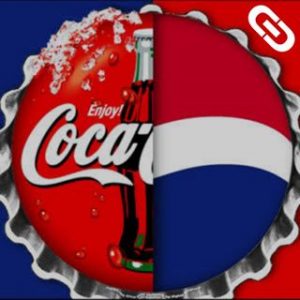Remember the last thing you bought? Why did you buy it? Did you need it? Usually, we buy things because we think we need them, but even that explanation isn’t waterproof. After all, why do we choose some things over others?
In fact, the real reason we buy things has to do with the way we relate to other people and how we want them to perceive us. It comes from psychology and evolution. That interaction, that desire to seen a certain way, sits at the core of our consumption, and it’s been around forever (way before the word “cool”). So let’s dive into the psyche and explore our desires, anxieties and rebellious instincts that drive us to want to buy things and be the coolest cat around.
BANNED KENDALL JENNER PEPSI COMMERCIAL
In an attempt to court a politically active younger demographic, Pepsi may have instead set them off. A new ad for the soft drink stars Kendall Jenner as a high-fashion model, donning a blonde wig in the midst of a protest. It’s not clear what the protest is supposed to be about — many of the signs read general phrases like “Join the conversation” and “love.” In the YouTube description for the commercial, titled “Live for Now Moments Anthem,” Pepsi calls it “a short film about the moments when we decide to let go, choose to act, follow our passion and nothing holds us back.” It features “Lions” by Skip Marley.
But it came out worse… Pepsi missed the mark, and they apologize! “We did not intend to make light of any serious issue. We are removing the content and halting any further rollout. We also apologize for putting Kendall Jenner in this position.”
If only Daddy would have known about the power of #Pepsi. pic.twitter.com/FA6JPrY72V
— Be A King (@BerniceKing) April 5, 2017
You make decisions every day. Even just a banal trip to the supermarket is full of choices and decision-making. But our behavior – including deciding what to buy – isn’t just a single set of actions. It’s actually in motion, swinging between three pleasure machines within the brain. You’re not necessarily conscious of these pleasure machines. They’re subconscious, and affect our behavior in their own particular ways.
“Three different decision-making forces in your brain guide your choices.
Let’s look at how they work:
The first is the Survival pleasure machine. Quick and inflexible, this force operates based on reflexes that instinctively jump into action without a thought. Say you’re having lasagna for dinner. You heap a huge serving onto your plate and, while chatting with your partner, help yourself to another one. You don’t even consider it. Why? Well, we humans are wired to eat as much as possible to survive!
The Habit pleasure machine is the second force. It’s the one that guides your routines and day-to-day life. You probably have habits you undertake so often, it’s like the habit dictates your behavior. For instance, many people have a cup of coffee every morning right after waking up. As opposed to an instinctual decisions, habit decisions form slowly over time.
Finally, there’s the Goal pleasure machine, the rational and conscious force. It allows you to weigh the pros and cons of a decision, and then make an informed choice. For example, you might habitually always buy Italian salad dressing, until one day you see an ad for Caesar salad dressing. The next time you’re at the store, you change your routine: you find the Caesar dressing, compare it to Italian dressing and decide which to buy. But the Goal force also has a social component. When you’re evaluating the two dressings, you’re actually doing so based on who you think you are and how you think others see you. In other words, you might go with whichever is organic, or locally produced, because you want to show that you care about healthy food and the environment.
We consume cool products to be perceived as cool by others. And every brand wants to try to be cool by their strategy, adds, commercials, look and feel of their products, communication and on social. Partnerships with celebs, they try everything so YOU will remember their brand and most important, will buy it!
By activating the area responsible for thinking about yourself and others. It’s actually located right behind your forehead and it’s called the medial prefrontal cortex. This part of the brain is responsible for evaluating how others will perceive you.
Therefore, you might think you’re buying some sneakers because of you like the way they look, but unconsciously, your brain is telling you that the shoes will have a positive social effect. They’ll make you appear cool, boost your self-esteem and make you happy. Interestingly enough, this quest for social standing and status affects the economy in ways you wouldn’t expect. But before we get into that, let’s see where this compulsion for cool comes from.
New cultures of cool emerge and make space for everyone
It’s hard to gain status in a group if you’re not interesting to its members. This premise leads naturally into the next idea, which explains that, if you’re not interesting to a group’s members, you’ll jump at the opportunity to attain a socially-rewarding position in another group. That’s how new cultures are formed. In the course of forming new cultures, consumption becomes a form of opposition to the predominant social order. Consuming certain things and not others can help one group forge a new culture.
For example, in the ‘50s, an entire subculture emerged around blue jeans and leather jackets. Like James Dean vs. the square businessman, members of this group were seeking an escape from the conformity of the then-dominant culture.
Brands caught on and began manufacturing jeans and leather jackets, marketing them as cool. The result was the fragmentation and rapid increase of styles, each of which abided by a different understanding of cool and status. Hence the mods, rockers, punks and goths.
Contrary to what some believe, consumerism is not a sickness of capitalist society, but an impulse etched into our brains. In fact, we purchase items we think of as cool to seek recognition from other humans and gain acceptance in society.
Let’s try this test – the power of a cool brand.
Try buying one can of Pepsi and one of Coke. Pour each into a clear glass and serve them to a friend in sequence. Then ask if they prefer Pepsi or Coke and which tasted better. You might be surprised that they prefer the taste of the soda that isn’t their brand of choice, a testament to how our brains attach expectations and the associated emotions to brands.

Share your feedback:)
Love, Marietta


